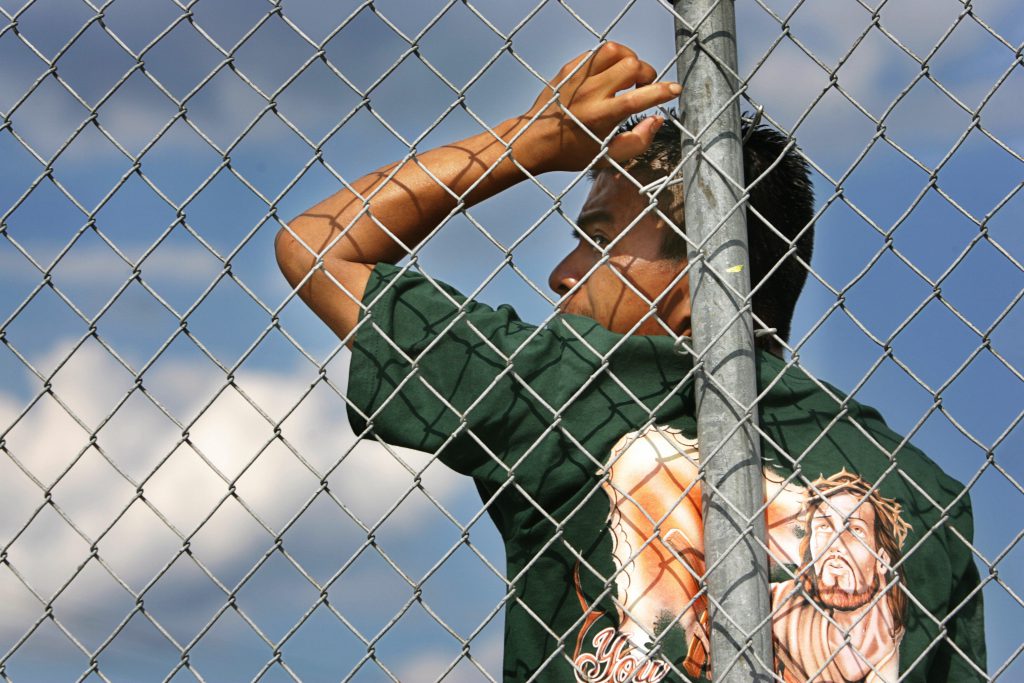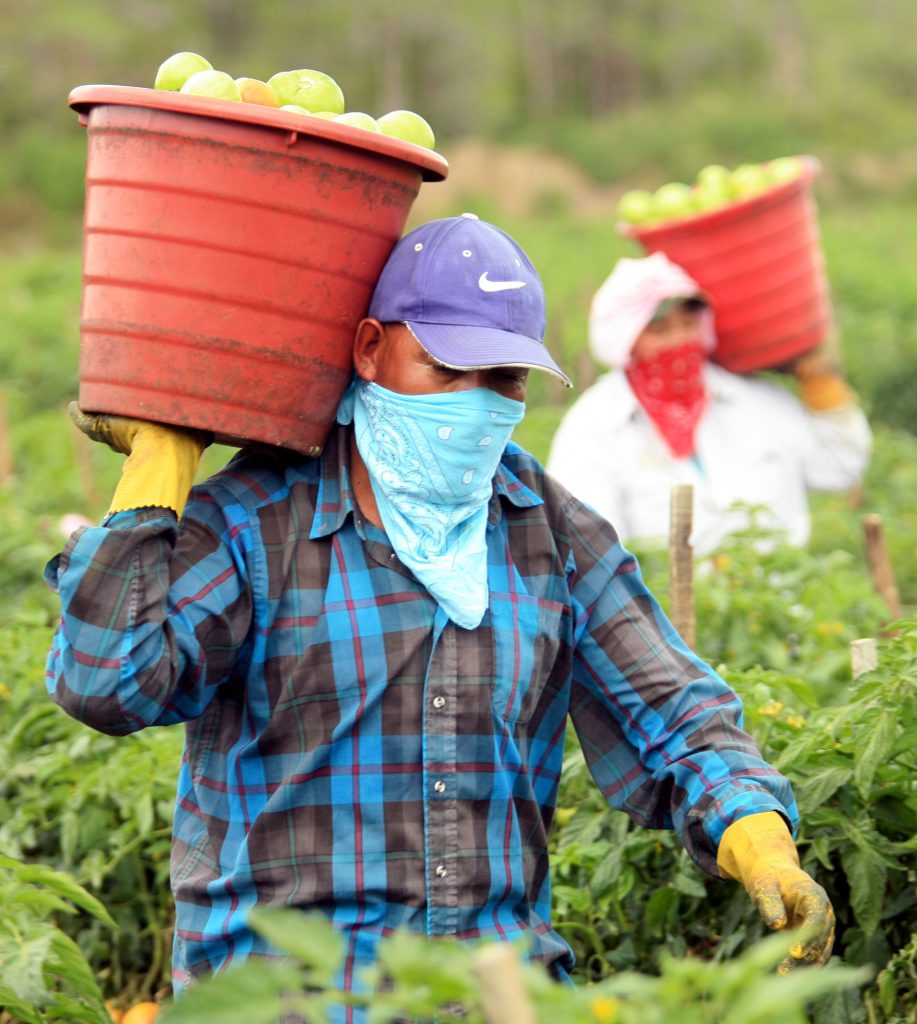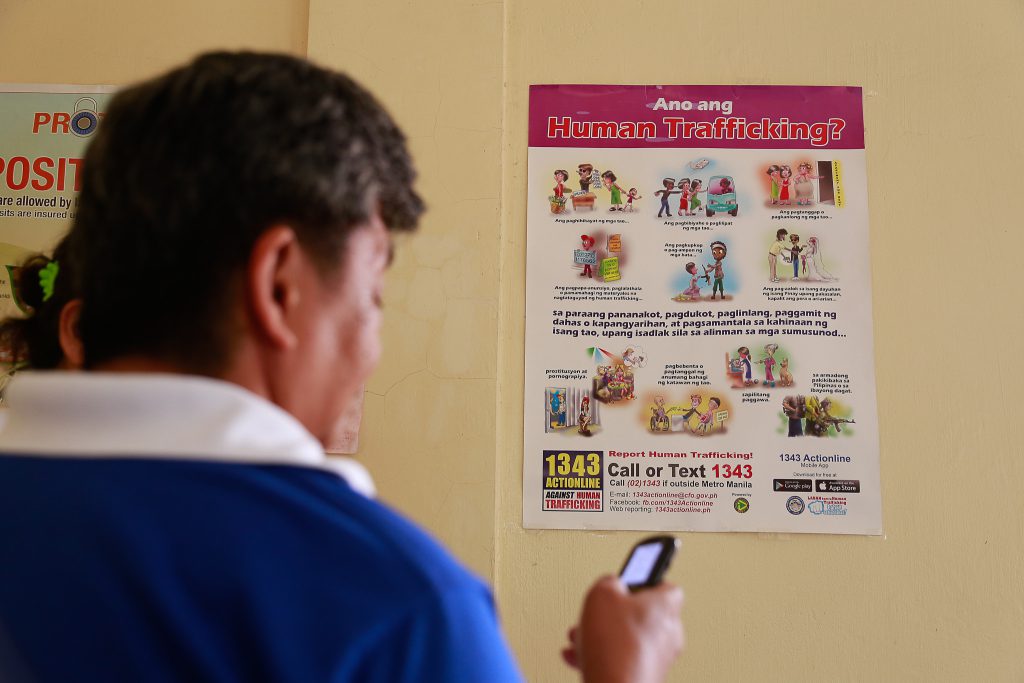How Our Modern Lifestyles Perpetuate Slavery

Pedro (a pseudonym) takes a long drag on his cigarette, using his ring finger to stroke the scar on his left cheek as he exhales. Over the years, he tells me, he suffered multiple fractures, and his cheekbones were shattered through the regular pistol whippings his employers inflicted on him. When the yield of tomatoes wasn’t high enough on the U.S. farm where he worked, Pedro’s boss would punish his employees through withholding the meager wages they were paid, locking them in outhouses, and pistol whipping them while threatening to kill their families. The tomatoes Pedro picked were sold to a transnational Mexican-inspired fast-food chain and other outlets throughout the U.S.
After several years of this abuse, Pedro and two of his friends decided that they had had enough. Through contacts at their church (the one outing they were permitted each week), they decided to come forward to report on their situations. When I met Pedro in 2012, he was in the process of trying to get a T visa—a nonimmigrant legal status for survivors of human trafficking—that would permit him to stay in the United States while searching for a new job. One of the terms of gaining this status involves cooperating with law enforcement in trafficking prosecutions. I last spoke with him earlier this year, and he still didn’t have a T visa. Getting this visa is not easy; most people, from the general public to case workers, do not immediately think of Pedro as a survivor of human trafficking, even though his is a textbook case of trafficking under U.S. and international law. The legal definition of human trafficking entails any instance of force, fraud, or coercion to elicit involuntary labor in any industry, including the sex industry as well as the agricultural industry.
When most people hear the phrase “human trafficking,” they picture a very young woman sold into sex work. This was the image portrayed in a high-profile series of exposés written by journalist Nicholas Kristof in The New York Times and The New York Times Magazine starting in 2004 and in feature films like Taken and Human Trafficking. These stories are shocking. But the women highlighted in them collectively compose one piece of a much larger—and more commonplace—puzzle in which we are all complicit.
According to officials from the U.S. State Department, an estimated 1 million trafficked individuals currently live in the United States, with roughly 15,000 new cases arising per year. Despite what Taken or Kristoff’s articles might lead us to believe, approximately 68 percent of trafficking cases are outside the sex industry, as determined by the International Labour Organization. Most people, like Pedro, are in the agricultural industry, but they can also be found working in the garment industry, the beauty industry, factories, and as caregivers and domestics. Pedro had come from Mexico in search of employment to help support his family; I met him while working as an activist with a local nongovernmental organization that was trying to help raise awareness about trafficking in the agricultural industry. As an anthropologist, I see both my activism and my ethnographic research as important contributions that provide policy makers with an understanding of the impacts of policies on people’s everyday lives.
In this month’s issue of The Atlantic, a moving memoir brings to readers’ attention the brutal life of a domestic Filipino “slave,” Eudocia “Lola” Tomas Pulido, who was given as a gift to the author’s mother in the Philippines and then brought to the U.S. to continue cooking and cleaning without pay or hope of a better life. The journalist, Alex Tizon, who passed away shortly before the piece was published, grew up with Pulido working in his home under trafficking conditions that he framed in his article as slavery. Pulido lived this way in Tizon’s household for 56 years.
It can be tempting in some cases, such as Pulido’s situation, to blame “culture” as the cause; perhaps, some in the U.S. say, it is simply normal in other places for people to be abused in these ways. This is not a helpful response. Trafficking is a cross-cultural phenomenon that affects men and women alike. These people are not victims of culture but are survivors of harrowing circumstances brought on by the larger forces of political economy. And the United States is partly to blame.
Part of the problem with understanding the contours of human trafficking is the murkiness of the terms that we use. In academia, “slavery” specifically refers to a violent situation into which people were born and assigned because of their skin color. It also references a particular point in history wherein a race-based caste system was violently enacted. But public usage is often quite different, and at times problematic. Some critics of the media coverage say that terms like “trafficking” and “slavery” are strategically deployed by the media today in order to shock audiences or as “click bait.” They argue that the use of the term “slave” outside of its proper context—for everything from being a “slave to fashion” to describing Pulido’s life as a domestic worker—can diminish the power of the word and our understanding of history, racial politics, and violence.
In addition to these debates about the definitions of slavery and human trafficking, people often make the assumption that trafficking must involve movement across borders, but this is not necessarily the case. Trafficking takes place around the world both within and across borders. And it is not limited to any particular industries, cultures, or countries. In the U.S., there are indeed large numbers of people who are trafficked from places like Mexico, China, the Philippines, and India; yet there are equally large numbers of individuals living in exploitative situations who are U.S. citizens trafficked in their own states and often their own hometowns.
Notably, under trafficking laws passed in 2000, the U.S. created a proviso for the distribution of 5,000 T visas each year. While this might not stop trafficking from happening, it gives survivors an escape route. Between 2008 and 2016, however, only about 4,300 were given out, according to the Department of Homeland Security. This is a drop in the bucket. The low number is largely because the threshold of abuse to qualify for a T visa remains unclear; the standards to qualify are opaque and often tethered to gender and sexuality. Too often, men like Pedro are viewed as being outside the trafficking framework—in fact their experiences are either rendered invisible or slotted into the realm of labor abuse, and thus, a T visa is never suggested to them as an option. In the case of Pulido, she would have qualified for such a visa, but that option was clearly never explored. This mechanism for addressing the problem of trafficking is obviously vastly underused.
Raising awareness of the T visa is part of the solution. But it is equally important to look at the larger picture. What is happening in the world that so many people are vulnerable to such high levels of abuse? Understanding the larger political economy and market forces can give us some insight into what needs to be done.
One thing many survivors have in common is that they chose from a limited series of options narrowed by their socioeconomic positions, as well as by a lack of employment in their hometowns or home countries. For those migrating transnationally, this lack of economic infrastructure in their home countries is often directly tied to decisions shaped by U.S. leadership.
The case of the Philippines—the origin of Pulido’s story—perhaps illustrates this best. Washington, D.C.–based international organizations like the International Monetary Fund and the World Bank often establish terms for debt repayment programs that unwittingly set migrants up for abusive situations outside of their home countries. Programs for the Philippines and other similar countries have debt repayment tethered to migrant remittances. What this means is that the Philippine government is encouraged to send large portions of the country’s population abroad; this migrant population is expected to send a significant percentage of their income back home, which increases the country’s gross domestic product and enables the government to repay its debt. In practice, the result is that the Philippine government, rather than investing money in education and job creation at home, invests in programs and services—such as middleman recruiting agencies—that encourage its citizens to go abroad.
When the migration goes well and when these agencies do their jobs, these remittance-based policies can lead to great opportunities for many. At the hospital where my father works in San Diego, California, there are an increasing number of Filipina nurses, all of whom earn high wages and are able to comfortably support their families in their home countries. But such policies also put a lot of pressure on the lowest income groups, reducing options for those left at home. Some individuals end up migrating through illegal channels because they do not have access to education or employment. In some cases, family members send or sell their children into labor migration situations in hopes of providing a better life—as was likely the case for Pulido—since there are so few income-generating opportunities at home. Trafficking becomes a side effect of larger policies.
High-profile cases such as those of sex-trafficked minors are particularly appalling. But these are just a tiny part of the problem and are difficult to uncover—and even more difficult to combat. In the meantime, while we continue battling sex trafficking, a growing number of people face force, fraud, coercion, and high levels of abuse while picking the tomatoes we eat, sewing the clothes we buy, and taking care of the elderly and children in our society. In the global race to secure the lowest prices possible for goods and services, there are many casualties. We must blow the whistle on these cases too—and take responsibility for our part in creating the demand for inexpensive goods and coerced labor.
Although it is easier to think about trafficking as being a problem somewhere else, we need to understand our own complicity in supporting economies of abuse. Transnational institutions, such as the World Bank, that structure debt repayment programs have enabled trafficking through their international policies, while continuing to neglect mechanisms that are available to tackle the problem. While everyday consumers may not be able to affect these broader policies, we can vote with our consumer choices. When cases of trafficked labor are made public in the media (as has happened with shrimp sold by Walmart and tomatoes from Trader Joe’s), shoppers can resist the cheap goods and stop supporting companies that are in some way complicit in encouraging such abuses. We can use the power of consumerism to call for more ethically sourced goods. For those of us who can afford it, we can pay slightly higher prices for products made by people who are provided a fair wage and treated with respect. Simple things like this can undermine trafficking and help stop modern “slavery” at its roots.

































